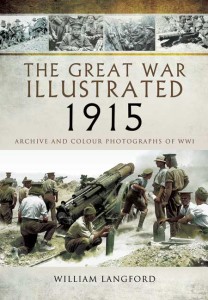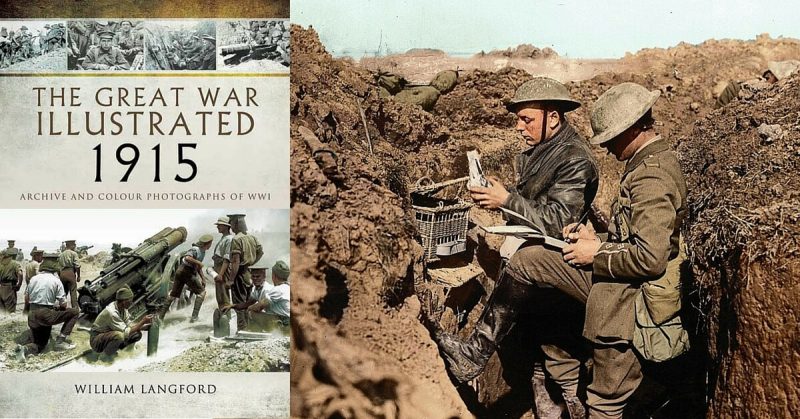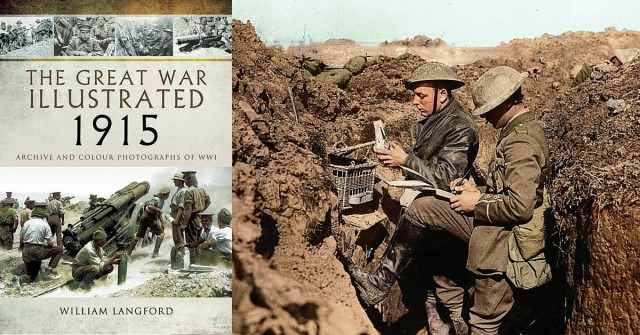Here we have the second volume in a series that it is safe to assume has three more to go. There really is a limited amount you can say about books like these, but that has never stopped me from talking about them before; so lets give it a go.
The method of the previous volume is repeated here with a mass of imagery squeezed into every page. There is no apparent subtlety and the photography acts like a shrapnel shell bursting with ideas and impressions. But, boy, does it work!
To me, there is something quite authentic about the style. It recalls the sort of ‘picture pages’ that appeared in newspapers before World War II. They were random affairs leading the reader in all directions, but that was actually the point.
Although photography had been identified as an art form in some enlightened quarters, to the vast majority it was still just a record, a quick look at things – not really a medium for saving moments of history. Of course, that is precisely what photography is and was – it saved moments and in age. Many people got to keep it a moment in time with their Kodak. The importance of photography was slowly beginning to be understood by a much wider audience. All this might be hard to appreciate in our age of Snapchat and selfies, but it was so.
We now take much more interest in who the photographers were and how they worked. They were pioneers and understanding them is as important as the work they left us. I have been busy working on a book about press photographers in another war and it is remarkable how many of them just disappear into the ether and all we have is their work. In my case, these were men who worked well into the 1960s and you have to wonder how it is that such prolific photographers could just vanish from our consciousness.
But they do. I find this very sad, but we must thank the Capas and the MacCullins for propelling great artists into the limelight. I recognise one or two images by the famous Ernest Brooks in this book but there are others of note worth taking a long look at. You have to marvel at some of the stunning work these Great War snappers produced given the chaos and terrible conditions they recorded.
This volume includes a section of colour photographs that really looks amazing. I love the use of contemporary colourised images but there now seems to be a proliferation of the technique in the Fotoshop age. Is this a bad thing? No, but we must take care not to expect all black and white images to be remade in digital colour.
Something of the original always gets lost in colourisation and as ‘precious’ as that might be it is immensely important to remember. Whether it works or not is an intensely personal thing. I am content to see the images in mono, but I see no harm in the genre and appreciate that it makes accepting images taken a century ago easier for the modern audience.
I was pleased to see references as to how digital imagery can resurrect often badly damaged images. This is a really important facet of books like this and while I am biased I hope the reader is appreciative of how much work can go into saving a photograph so we can enjoy it.
If you are looking for an entertaining history of the war then you will find a big slice of it in this book. The authors look beyond the photographs to the attitudes and spirit of the times to arrange things in context. This is crucial to the success of this book .
The thing I like most is that there is not too much interpretation or analysis. The authors allow the photos to speak for themselves and allow us to work out things for ourselves. You could do a lot worse than flip through this book while filling in gaps with one of the wikiwotsits. There are also a small number of fantastic websites dedicated to the Great War where you will also excellent information and insights. Embrace it all.
The authors tap into a rich vein of events, people and artistry to bring that awful year, 1915, to life. If the next volumes are anywhere near as good as this one they will have succeeded in producing a wonderful set of books, well worth having, by anyone interested in military history.

Reviewed by Mark Barnes for War History Online.
THE GREAT WAR ILLUSTRATED – 1915
A Picture Editor’s selection of 1,000 images illustrating historic events in 1915.
By William Langford & Jack Holroyd.
Pen & Sword Military
ISBN: 879 1 47382 396 9

